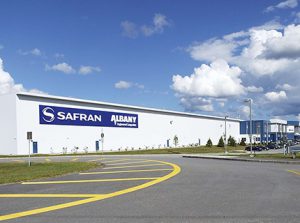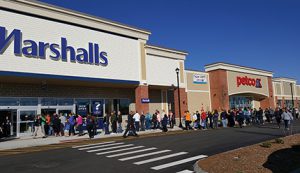 Karen Pollard, City of Rochester NH
Karen Pollard, City of Rochester NH“Economic development” is a term frequently used, but often misunderstood. Simply, it is the creation of wealth in a specific area, and this is often measured in jobs created, capital investment and new property tax base. At the last board retreat of the Northeast Economic Developer’s Association, we discussed how, in New England, most communities include vitality, sustainability and other types of revenue generation such as sales or rooms and meals tax. Fortunately for those of us involved in the “action” side of economic development, which includes real estate professionals, many communities and regions have created economic development strategic plans that will guide the way on what kinds of development is desired, and what impacts are to be avoided.
The strategic plan for Rochester, N.H. has been approved for the ten year update in 2016, so it is an appropriate time to evaluate and benchmark the successes before bringing in a new slate of goals and objectives. The strategy approved in 2006 encouraged major changes to process and policy, and also focused on making incremental improvements. As the joke says, “How do you eat an elephant? One bite at a time,” and that is how Rochester created so much new wealth in the last decade.
The Granite Ridge Development District
The creation of the Granite Ridge Development District, a 913-acre commercial and entertainment zone, involved policy changes as well as active investment attraction. The city rezoned the acreage for maximum density and favorable construction conditions beneficial to commercial developers. One critical feature is the construction of Marketplace Blvd., a city street interconnecting the developments and allowing double the development capacity. The N.H. Dept. of Transportation invested more than $135 million into the Spaulding Tpke. in Rochester, directly impacting and making improvements for this massive development zone in the Seacoast of New Hampshire. Waterstone Retail of Needham, Mass. has a 500,000 s/f center underway with Phase 1 now open and Phase 2 approved by the city. Thousands of jobs will be created, serving area residents and visitors to the region with shopping, entertainment and restaurants.
Granite State Business Park
 Safran Aerospace Composites - Rochester, NH
Safran Aerospace Composites - Rochester, NHThe Granite State Business Park next to Skyhaven Airport in Rochester, is the largest of the city’s eight parks at
282 acres. Started in the late ’80s by a private developer, the park was acquired by the city and expanded in 2010. Since then Albany International has expanded, moving their corporate headquarters from New York and their R&D facilities from Massachusetts and employing more than 400. Safran Aerospace Composites, in a unique partnership with Albany, has built a 345,000 s/f facility for composite jet engine components, and has secured an option on another 50 acres. NCS Global has built a LEED Certified Silver facility for their global headquarters on Innovation Dr. Phase 2 Medical, one of the fastest growing medical device firms in New Hampshire is located in a 75,000 s/f facility. With Phases 1 & 2 of the park now under agreement, the city is focused on adding more land zoned for industry to the park on the south side of the city. Active rail, COAST bus service and Skyhaven Airport provide access in addition to SR-108 and Spaulding Tpke. Exit 12.
 Granite State Business Park - Rochester, NH
Granite State Business Park - Rochester, NHDowntown Arts & Entertainment District
Rochester became a National Main St. Community in 2006, gaining approval from the National Trust for Historic Preservation for their strategic plan and achieving non-profit organization status. Similar to other New England historic mill towns, the city had suffered from disinvestment in infrastructure and buildings, depressing property values and losing foot traffic. The Main St. Approach targeted economic revitalization, events, downtown design and organization outreach with their army of volunteers. Concerts on the Square, a Farmer’s Market and National Comic Book Day are just a few of the new activities in the Historic Downtown, bringing thousands of visitors each year. The Rochester Museum of Fine Arts displays in several permanent locations, but also exhibits “pop-up” art shows in vacant storefronts improving the look and foot traffic of Downtown. The economic development office has been selected by Americans for the Arts to participate in Arts & Economic Prosperity V (AEP5) to measure the local economic impact created by public arts organizations in the community as well as measure spending by arts audiences. The Rochester Opera House has been enjoying a renaissance, with 2015-2016 being its most successful season since it reopened in the 1990s. Downtown occupancy and residency is up dramatically, with 64 new dwelling units and a 5% drop in ground floor vacancy this past year alone. With input from Rochester Main St., the city has improved city policies and ordinances, such as signs, zoning, expedited review, outdoor dining and much more.
Rochester Public Works has multiple new road, water and sewer improvement projects that will support existing
 The Ridge Marketplace grand opening May - Rochester, NH
The Ridge Marketplace grand opening May - Rochester, NHand continued growth in commercial and industrial development. A $4 million project on Salmon Falls Rd. and SR 125 North will double the water capacity for Crossroads Business Park and the Market Basket Marketplace. The visitor friendly vibe of downtown will be enhanced by a “wayfinding” initiative, guiding pedestrians, bicyclists and autos to their favorite destinations and abundant free parking. City Hall offices will be expanded into the annex, once the Rochester Fire Department, the structure will be rehabilitated and historically restored to meet the city’s need to bring economic development, planning and building, zoning and licensing services together under one roof. This one-stop development center to serve existing and welcome new businesses will be ready for occupancy by the summer 2017.
The overall economic impact of these accomplishments makes living and owning a business in Rochester a great investment. More than $100 million in new buildings have been constructed, resulting in a 63% increase in commercial and industrial value generating new tax revenue for the city. As a percentage of the city’s development, commercial and industrial is increasing from 19.3% in 2003 to 24.7% in 2015, distributing the property tax burden across a more diverse base and allowing for services in the city to keep pace with demand.
Karen Pollard, CEcD, is the economic development manager for Rochester, N.H.








